Last year, as part of the Chordoma Survivorship Initiative, we called on you to tell us about the ways your life has been impacted by chordoma. Through the Chordoma Survivorship Survey, we aim to capture the physical, emotional, social, and practical experiences of 1,000 or more of our community members — both survivors and co-survivors — to learn more about your needs during and after treatment, whether those needs are being met, and how we can help you live the fullest lives possible.
In less than six months, we received more than 650 responses from individuals in 34 countries, bringing us nearly two-thirds of the way to our goal. If you are one of the 650 who have taken the survey, thank you! We appreciate your willingness to be open about the issues you’re facing and to share your personal experiences in dealing with those issues.
Initial survey results
We know it’s important to you to understand what we’re learning from the survey, and we are eager to share that information with you. To do that, we have posted preliminary results of the Chordoma Survivorship Survey on our website as easy-to-follow charts and graphs.
Responses are continuing to be collected, but of those who responded between August 2020 and January 2021, here are some important takeaways.
General information about survey respondents
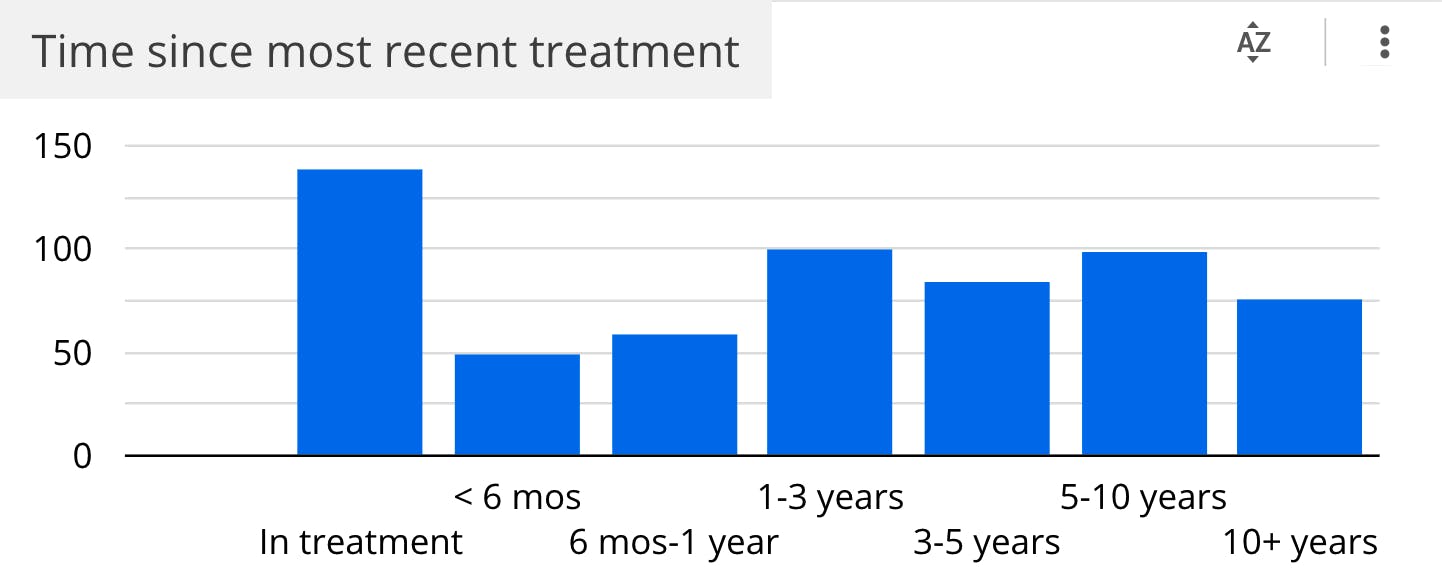
- 76 percent of respondents are patients or survivors and 24 percent are caregivers or co-survivors.
- 46 percent have skull-base tumors, 30 percent have sacral tumors, and the remaining are mobile spine (cervical, thoracic, and lumbar) or more than one tumor location at diagnosis.
- 1 in 5 respondents are currently in treatment; this could mean that they have recently been diagnosed and are undergoing their first treatments, being treated for recurrent disease, or in longer-term systemic therapy treatment for advanced or metastatic disease.
Quality of life challenges reported by skull base, mobile spine, and sacralpatients and survivors
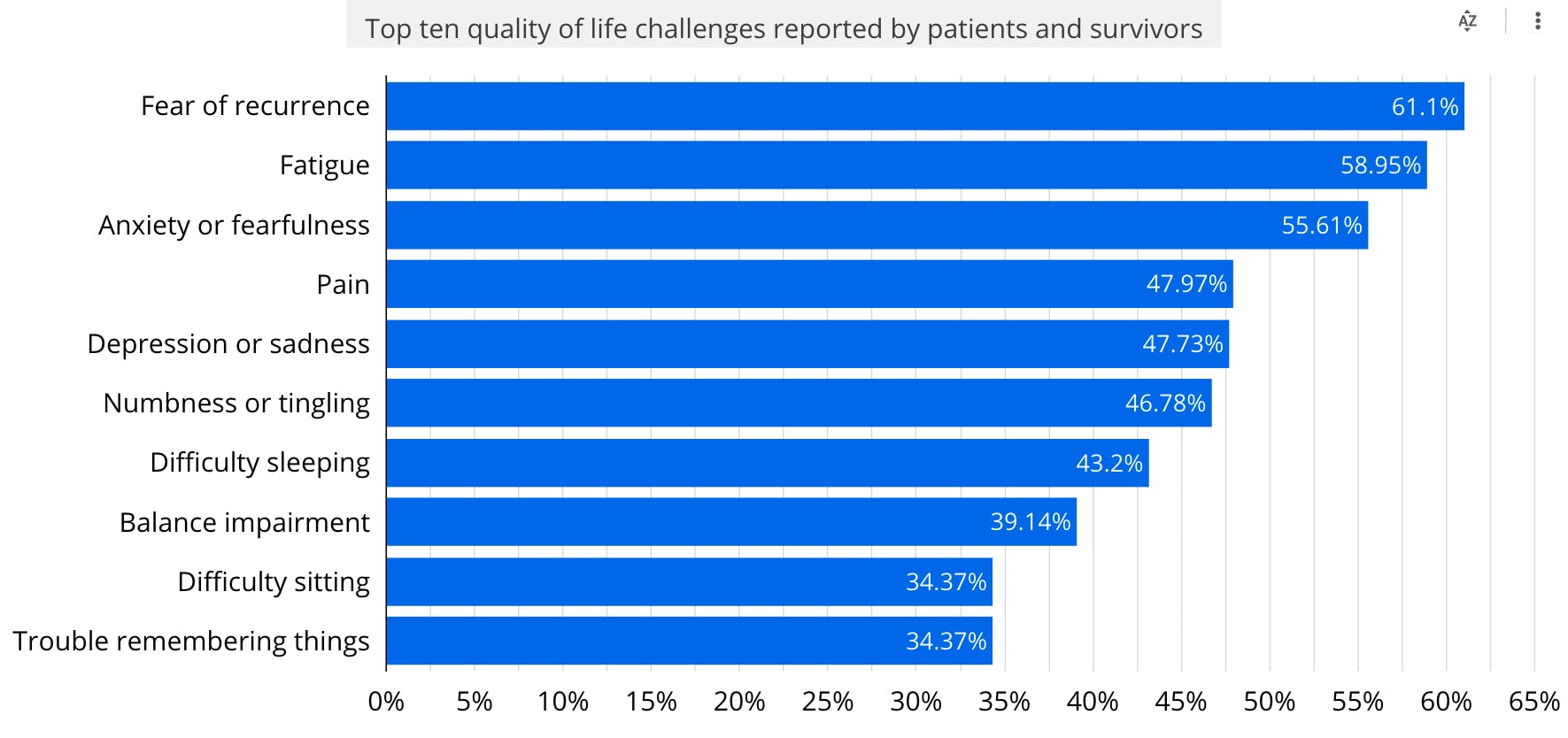
The most prevalent physical challenges reported are:
- Fatigue (skull base)
- Pain (mobile spine)
- Difficulty sitting (sacral)
The top emotional challenges reported across all tumor locations are:
- Fear of recurrence
- Anxiety
- Depression
The main practical challenge reported by all patients and survivors is the inability to go to school or work.
Quality of life challenges reported by caregivers and co-survivors
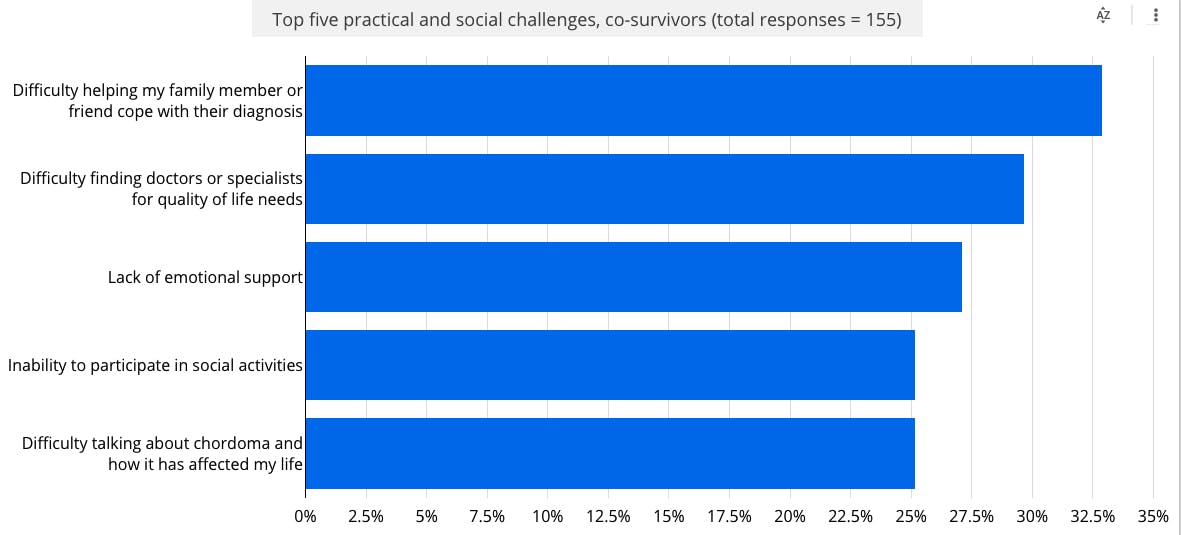
The most prevalent emotional challenges among caregivers and co-survivors are the same as patients and survivors:
- Anxiety
- Fear of recurrence
- Depression
The most prevalent practical challenges among caregivers and co-survivors are:
- Helping the patient cope with their diagnosis
- Helping their loved one find doctors for quality of life needs
Experiences with survivorship care planning
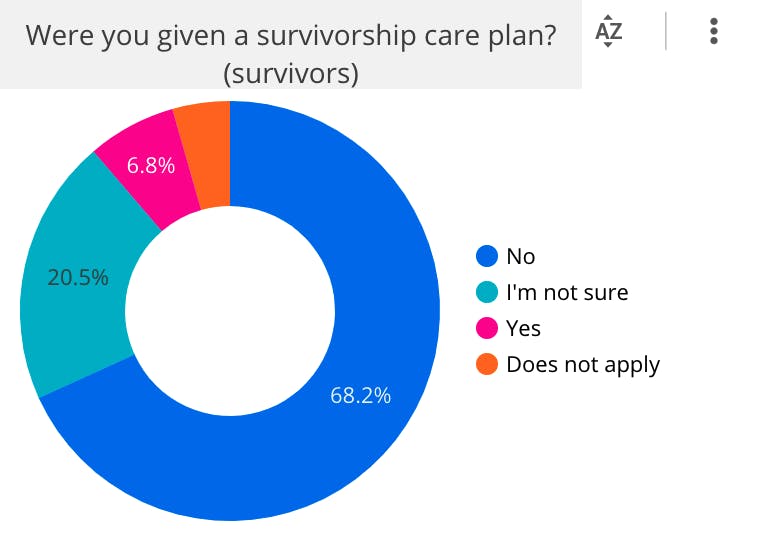
- Only 7 percent of survivors and 5 percent of co-survivors say that a survivorship care plan was given when the patient completed their most recent treatment.
- Fewer than half report that their doctors discussed current or possible quality of life issues, including how to seek care for those issues, at the end of the patient’s last treatment.
- Just 1 in 4 survivors say that their chordoma doctor provided them with information to give their primary care provider about chordoma.
Ability to access care for quality of life challenges
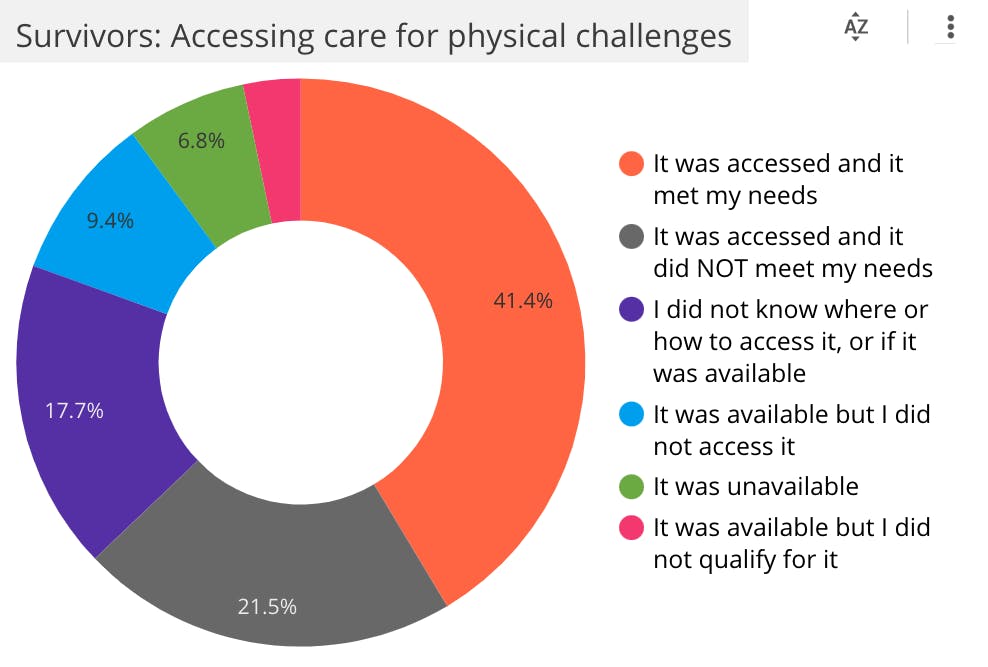
- Over 75 percent of survivors experience 5 or more quality of life challenges, but only 62 percent of those who do say they accessed care for those needs, and just 41 percent say that their needs were met by that care.
- 32 percent of patients and survivors did not know where or how to access care for emotional and practical needs, or even if it was available.
- Similarly, 38 percent of co-survivors did not know where to access care for their emotional and practical needs.
What will we do with these results?
What we’re learning from the Chordoma Survivorship Survey is expanding our understanding of the quality of life issues most often experienced by chordoma survivors and co-survivors. At the same time, it is also confirming our assumptions that there are significant gaps in the information and resources available to help you find care for these issues.
As you know, the Chordoma Survivorship Initiative was launched last year because we are making it a priority to help you not just survive after a chordoma diagnosis, but thrive. To that end, and based on the ways you told us we can help, you can expect to see new content on our website and downloadable materials on the quality of life challenges you report experiencing most often, how to get care for those needs, and generally how to navigate life during and after treatment.
Additionally, while we are all remaining distant from each other, virtual options like webinars will provide opportunities to learn from experts on these issues. When we can be together in-person again, you will see a larger focus on survivorship and quality of life in our community conferences.
To help support you socially and emotionally, our Peer Connect program is recruiting and training new Peer Guides to provide one-on-one support. This spring, we will be launching monthly virtual support groups so you can connect with others in the chordoma community no matter where you are in the world. In Chordoma Connections, the Quality of Life discussion forum is a place to go to talk with others about any challenges you are experiencing.
NEW: Pain management resources
Our website now includes information dedicated to understanding, assessing, managing, and finding care for pain associated with chordoma. You will find insights for both patients and caregivers about types of pain, how to talk with your doctor, what tests you can expect, treatments that are available, and where to find pain management care in your area.
This information is also available to download as a PDF. It is the third installment in our Treatment Information Series, designed to provide easy-to-understand information about the different treatments that may be involved in your chordoma journey.
Webinar: Options for comprehensive pain management
Watch the recording of the first webinar in the 2021 Virtual Chordoma Community Conference Series featuring Maryam Jowza, MD, Staci Martin Peron, PhD, and Sasha Knowlton, MD, to learn more about the type of pain you might be experiencing, where to get help dealing with it, and how the Chordoma Foundation can support you.
Contact a Chordoma Foundation Patient Navigator
Chordoma Foundation Patient Navigators provide personalized information and support to anyone affected by chordoma, anywhere in the world, at any stage of their journey. Your Patient Navigator will use their extensive knowledge of chordoma to help answer your questions, provide information about treatment guidelines, help you find qualified doctors, talk with you about side effects, and connect you with others in the chordoma community who have been through a similar journey.